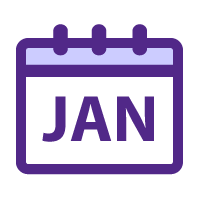
We know it’s an unusual environment for teachers these days, as classes can shift from face to face to hybrid to remote and back again. So your College of Education faculty wants to offer you a few ideas to support you through these changing times. We think you’ll find their ideas helpful!
 Tips to be successful in this environment
Tips to be successful in this environment
Suzanne Porath: NearPod is a great tool for encouraging participation and sustaining attention.
Build relationships through fun activities, theme days, and unstructured conversation time. It is OK to not be academic all the time. Learning happens through the relationships we build with students.
We ALL make mistakes and fumble—goodness knows I have this fall (many Zoom fails). Admit mistakes, reflect on how to be better, and move forward. Dwelling in the past bogs down the present.
Sherri Martinie: Students want to feel connected with others. We often want to jump right into content and that’s not the primary interest or concern for students. They want be noticed and heard. I often have first year teachers email or call me and tell me their students won’t talk. When they are teaching and ask a question or try to start a discussion, no one will answer. I tell them to ask a question about something unrelated to math that is of interest to the students – last night’s football game, a TickTock video, a movie, weekend plans, etc., and get them talking. Then shift to the content. There are some good recourses that can support this. One teacher I talked to recommended “2000 Would You Rather Questions” and “2000 Questions about Me.” This teacher makes a routine out of starting class with one of these questions. I have had success with “Would You Rather” questions working with people of all ages. I also recommend trying to put students in small groups during a whole-class meeting or, alternatively, meet with them in small groups some of the time. If you have 60 minutes for a remote class, you could meet with half the first 25 minutes and then second half the second 25 minutes. If you don’t have time to hear from each individual student during the time you meet with them, teach them how to record and send a video or audio message to you. You may not have time to respond to all of them, but select a small number each time and rotate through until you’ve responded to everyone. The more connected they feel, the harder they will work for you!
Angie Messer: Engage/interact with your students as best you can! Create topics that are appropriate for them to discuss in breakout groups, be sure to have someone report out for the group and then you need to have a short dialogue with that person. Bounce between breakout groups while they are having discussions so they know you are listening and interested and value what they are discussing.
James Alberto: First and foremost, don’t be afraid to slow down and embrace the idea of consciously spending extra time for you to connect with your students, and vice versa. New research points out what we pretty much already knew—our students are socially and emotionally struggling right now, and so are teachers. This aspect of their health and development (and ours) is MUCH more pressing right now than any content we can deliver. Create time for them to connect with you, you with them, and them with each other. The content can wait a bit! Best of all, this is so easy to do because they WANT to do it…they need to do it!
The best literature I’ve read lately on this is a great study called Are the Kids Alright, conducted by a group called the California Partners Project. It’s worth taking a few minutes to peruse. The pdf of the study’s findings can be found here: https://www.calpartnersproject.org (click on “Read the Report”).
Spencer Clark: You’re the expert; be a problem solver.
Tonnie Martinez: Students love to be consulted. If you begin a remote lesson with a poll or question of the day, students are engaged from the minute they click on. Say the students’ names. Get creative with reasons for students to join the fun. Some ideas are: Hide an object in view each day and see who can find it first, crazy hats, dress up, everyone with a mustache, pets (real or pretend), meet the family member, and ask the students for their fun ideas. Google “national days” and celebrate something each day. Keep in mind that students’ attention span correlates with their age. The younger the student, the more transitions/breaks in the action are needed—think “bursts” of micro-learning instead of long, drawn out lessons.
 Words of encouragement
Words of encouragement
Suzanne Porath: Care for yourself, so you can care for your students. It is not selfish to turn off the computer and enjoy time away from school. Don’t feel guilty and savor it mindfully so you can be refreshed when you choose to return to grading, emailing, and planning. Make sure to plan to refresh yourself.
Sherri Martinie: As teachers, it is easy to get bogged down by the challenges we face each day. We often take for granted the things that are going well. So I say to you, you are making a difference in ways that you may not realize for some time. One day you will tell your children, your grandchildren and new teachers that you mentor about the first year you were a teacher. You will try to explain what it was like to teach and learn during a pandemic and they will be amazed by your strength and your courage. You are a pioneer. You are pioneering innovative techniques for teaching and exploring a new world of learning. We will forever be changed from this experience and your commitment to your students during this time will be something they will never forget.
Angie Messer: You are getting an amazing opportunity! You get to experience this hybrid style teaching in its infancy. All teachers are like first-year teachers. There will be so much sharing and support! Take advantage of companies offering free support for teachers during this time to explore avenues that support the content you are teaching. Look for the positives – what does hybrid teaching allow you to do that teaching in-person did not!
James Alberto: Right now, they need connection. You can do this! You were built for this…you need connection, too! Keep in mind, the content we learn is all a blur in the end. What endures is the way a teacher made us feel—the connection they made with us. Focus on that. They’ll remember you for that long after they have forgotten who taught them which content. The relationships are what matters in the end.
Spencer Clark: You/we are making history, embrace it and think about how you and your colleagues can shape the future of education.
Tonnie Martinez: Think of building a learning community instead of a being leader with followers. We’re all pioneers right now and students will support what they help create. Check-in’s that ask, “How are we doing? What do we need more of? How could we tackle learning this?” can make your learners feel a part of something great.
 Other thoughts
Other thoughts
Suzanne Porath: Focus on one thing at a time – too often we try to multi-task. That is a great way to do a lot of things poorly!
Angie Messer: Take time to have some fun with your students! Incorporate “get to know you” activities and interactions that allow you to laugh and have fun. You can play 20 questions, charades, etc. One fun question we had our students discuss and report out on is “If you were ruler of education, what FUN rule would you implement in your school?” (Example: Walk Backward Wednesdays, Field Day in High School, Trade a Grade for a Day) Our students had a great time with this! It helped them remember what they thought fondly of from their school days.
James Alberto: Google the term “how to get students to know each other online.” I’ve done this same search a handful of times this school year already, and I get new results each time. Here’s an example of what I found recently: https://symondsresearch.com/icebreakers-for-online-teaching/ (a list and instructions for 21 different online icebreakers).
Tonnie Martinez: If you are teaching remotely, please consider asking your students to private message you each week (at least). For example, “Today I need PM’s from students 5, 15, 19, 22. and 25.” For the most part, you’ll see “I’m good” or “I’ll be glad when _____ is over.” But you may read, “My Dad tested positive for Covid-19,” or “We have to move to a different place,” and you don’t know students’ needs unless you ask.







